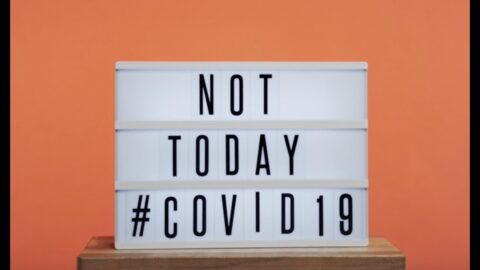Not getting enough sleep?? People often ask about insomnia and how to get better sleep. Hint: it’s not by eating insomnia cookies (though I hear they are pretty tasty).
Difficulty sleeping at any point throughout the night is commonly known as insomnia. Not getting enough sleep can be a difficult thing to experience whether during times of stress or if it occurs continuously.
How do I get more sleep? How do I get better quality sleep? There are a number of reasons people experience insomnia. This clip discusses a few highly common reasons for insomnia and provides research-based methods on how to get more sleep.
I also make a few good book recommendations if you who want to understand more about causes of insomnia and how to sleep better. The first book about insomnia and sleeping better is by the lead researcher a frontline sleep therapy. The second book is by a group of sleep experts and has a workbook component if you like to follow along with structured exercises.
Also check out our related Emotional Minutes episode on dreams and why we dream.
I hope you can get some sleep. But hopefully these clips aren’t the things that put you to sleep! Happy viewing.
Hi. I’m Dr. Matt B and these are your Emotional Minutes. Lying in bed trying to get to sleep actually brings about an opportunity to talk about sleep. A lot of people have trouble getting to sleep. It can be really difficult to fall asleep during times of stress. For example, work stress, family stress, life stress, things like pandemics, etc. For some people trouble falling asleep can be a continuous struggle.
Trouble getting to sleep and insomnia
There are many forms of insomnia. There is the most well-known type, which is difficulty getting to sleep at the beginning of the night. However, not getting back to sleep after you wake up in the middle of the night or waking up much earlier in the morning than you had expected and not being able to get back to sleep also constitute forms of insomnia.
The good news is that there are structured behavioral methods and strategies people can use to help get better sleep. I often think of these strategies as a dual approach: minor tweaks in daily schedules and routines, and large-scale strategies. It’s usually good to integrate as many of these as you can, but most of these strategies involve a long-term approach.
This long-term approach means that these strategies may not work after the first night or the first couple of nights. This is because of the nature of humans and how our brains do not immediately get used to changes. However, when people stick with these strategies over a number of days or weeks, beneficial effects really take hold.
Beating insomnia using minor changes
The first set of strategies involve a couple of minor changes that people try to integrate into their routines:
1. Not taking naps (naps can interfere with the body’s natural sleep cycle).
2. Avoid any caffeine after the early afternoon (e.g., after 1:00-2:00 PM).
3. Not using your bed as a place to think through the day or about your stressors.
They say that bed should be used just for the 3 S’s: sleep, sick, and sex. Naps and thinking about the previous day or the next day don’t fit into those categories. However, we can fall into the habit of using the bed for other things. We may automatically start going over all the stressors of the day right when our head hits the pillow or how we are going to respond to things we anticipate having to deal with in the coming days.
One way to counteract this is to find a place in your house that’s away from your bed and use that as a place to let your thoughts wander. Comfy chairs or hammocks are good options. When you are in your spot, let your thoughts go wherever they want. Doing this for a few days or weeks helps retrain your brain to not associate your bed with a place to let your mind wander.
Major strategies to beat insomnia
There are also a couple of key strategies that target larger habits and beliefs that can interfere with sleeping. One of the main things that can interfere with someone’s desire to fall asleep is thinking about how much they need to sleep or how bad things might be if they don’t fall asleep. People often believe they’ll have great difficulty facing the next day’s challenges or be less effective if they don’t sleep.
These beliefs contribute to people pressuring themselves to get to sleep or continuously telling themselves that they “should” or “need” to sleep. Ironically, pressuring oneself to fall asleep gets in the way of the body’s tendency to fall asleep naturally. The body wants to go to sleep, especially after a certain point in the day.
Using new ways to approach these beliefs and thought processes can be helpful for falling asleep. A number of these key strategies focus on counteracting thought processes and beliefs that interfere with naturally falling asleep. These are sometimes discussed by researchers and clinicians for insomnia and how to get better sleep:
Major Strategy 1: Try to stay awake
Willing yourself to sleep or telling yourself that you’ve got to get back to sleep doesn’t work. So try to stay awake. Thought processes like telling yourself “Hey, I’ve got to sleep” or “You need to sleep!” get in the way of the body’s natural ability to sleep. Trying to make yourself stay awake sounds counterintuitive, but interestingly it helps shift your attention away from those thoughts. People don’t often try to talk themselves into getting to sleep when they are trying to stay awake.
Major Strategy 2: Check in with your thoughts and beliefs about sleep
Often people really believe that they “really, really need” a certain amount of sleep to completely function the next day. Being convinced of this can lead us to toss and turn while thinking about how the next day won’t go well if we don’t get “enough” sleep. This is another case of thought processes getting in the way of us falling asleep.
The classic example of this is looking at your clock and continuing to think things like “Oh no! Now I’ve only got [6, 4, 3, 2] hours I could get sleep.” Continuously looking at your clock and thinking about how much sleep you’re not getting and how it’s going to affect your day can really increase intrusive thinking. This does not let our body or brain just rest. However, examining and evaluating those beliefs for accuracy can be extremely effective in reducing intrusive thoughts.
For example, will it be the worst thing if you don’t get that many hours of sleep? What will actually happen even if it was true that you wouldn’t get all your work or family tasks done? People often function fine without much sleep. Unless you’re running a marathon or completing the math section of the SATs, most people can get through their day the way they need to without much sleep.
Major Strategy 3: Don’t lay in bed and toss and turn
People can lay in bed for hours trying to talk themselves into sleeping. If you don’t fall asleep within 20 minutes, get up and get out of bed. At that point, engage in a relaxing activity you enjoy doing. For instance, do a craft, read articles about something that interests you, or read a book. Engaging in a relaxing or calmer activity makes the body begin to want to go to sleep on its own.
Pro Tip: Many people say to “just read something” to get to sleep. If you don’t particularly like reading for its own sake then don’t try to read (unless the topic is of interest to you) – pick something else relaxing to do.
Closing
I hope this explanation of sleep difficulties is helpful. These strategies may or may not work perfectly for everyone. However, they are a few of the best strategies science has uncovered. This is often shown to be as or more effective than sleep medications across many research studies.
If you’re interested in this topic and you want to learn more about it or to get some more extensive detail on these and a number of other strategies to help sleep, there are two books I strongly recommend. The first book on sleeping better is by the lead researcher of a frontline therapy for insomnia. The second book is by a group of experts and includes a workbook component. I recommend this one if you like following along with structured exercises.
I’m Dr. Matt B and these are your Emotional Minutes. See you next time!



